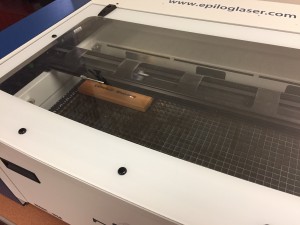Synthesis #1.1 (Politics)
Different times, different reasons, different people, yet every politician follows similar devices and traits to talk to the American people. Abraham Lincoln, the man who started and ended the American Civil War. Ronald Reagan, who stood against the Soviet Union. George Bush, who guided Americans through our darkest hours during September 11, 2001. Hillary Clinton, who has been accepted for presidential nominee. All of them use word choice, repetition, and imagery to strengthen their speech.
Word Choice is huge in their speeches for connecting them to the audience, or to give credit where credit is due. Lincoln used word choice having connected himself to the audience while giving credit is combined seamlessly in, “[i]t is for us the living rather to be dedicated here to the unfinished work which they who fought here have thus far so nobly advanced,” (Lincoln). Lincoln connected himself to all of America through the use of, “for us the living,” which made both sides take a moment to come together and grieve for the dead (Lincoln). This showed that the North and the South was not all too different like they believed. The President then goes on to give credit to the men that died in the Battle of Gettysburg, making the families grateful to Lincoln for his caring words to their dead sons and brothers. Ronald Reagan’s use of word choice acted differently than Lincoln’s. In saying, “I pledge to you that we will maintain,” Reagan first shows how he understood that Berlin was not America using “I” and “you,” but then connected Americans with Berliners with the use of “we,” (Reagan). This change in word choice built his pathos by having shown how Berlin and America are separate but together are could make the world whole again. Reagan gave credit to Berliners with, “Berlin a message of hope,” which pulled Berliners to listen with greater passion having built pathos again (Reagan). George Bush was president when September 11th occurred and grieved with the nation, having brought Americans together when they needed it the most. To bring Americans together Bush used word choice similar to Lincoln used such as, “[w]e have seen the state of our Union in the endurance of rescuers,” (Bush). Bush consistently used “we” and “our” to show that the brutality against Americans had affected everyone including himself (Bush). Then Bush continued and gave credit to the rescuers, and to everyone who supported America, which built an immense amount of pathos as people tend not to feel so alone when they heard that the world was grieving right there with American (Bush). Hillary Clinton used word choice the same way Ronald Reagan used his. This is in, “[s]o I want to tell you tonight how we will empower Americans to live better lives,” which holds the same, but different strategy (Clinton). She then connected the audience with the sharing of said knowledge, which made the audience feel more powerful from greater knowledge. Through word choice, the politicians connected themselves to their audience to create a stronger bond, which was boosted with repetition.
All the writers share repetitions within their speeches, reinforcing their statements. In the Gettysburg speech, Lincoln proclaims, “we cannot dedicate, we cannot consecrate, we cannot hallow this ground,” adding a power to the words (Lincoln). That power was the power of God, and how the people who had not fought could not make Gettysburg field any more consecrated than it had already been by those that died. The repetition builds to a climax, which Lincoln uses to control the nation’s emotions. Reagan repeated “let us” through the fourth page of his speech (Reagan). Reagan used repetition to plead with Mr. Gorbachev to open the Berlin wall so that the world could reunite again. Reagan’s repetition made it clear to others that Mr. Gorbachev was the reason that East Berlin was cut off. To Mr. Gorbachev the repetition showed that everyone wanted to connect to East Berlin because of the “us” and that only he could allow that (Reagan). As Bush gave the state of the Union address after September 11th, repetition was another device he used to strengthen wounded America. When Bush said, “[w]e will not tire, we will not falter, we will not fail,” he brought strength to his words. This strength empowered the American people with his decision to find the perpetrators of the attack, getting people to his side while having turned their grief to anger. Clinton used repetition to build a stronger connection between her and the voters having said, “to work closely with our troops and our veterans,” (Clinton). This repetition emphasized that the troops and veterans are not just with the voters but also with her, and that she worked closely with them, all of which makes voters want her more for president. In the speeches, all use repetition with word choice to create a more powerful message to the audience, building their argument.
However, all the politicians used imagery to make their opinions more memorable to people. In Lincoln’s concise speech after the bloodiest battle in American history, he gave words meanings and imagery that still reverberate throughout time. One of the famous ones being, “government of the people, by the people, for the people shall not perish from the earth,” in which he invoked more than emotion. Lincoln had the people of America think of their nation, a nation they control, and imagine it gone forever. The people whom the government controls, yet is controlled by, lost because of the war they were fighting. This powerfully imagery made many want the war to end, and for the war to end was Lincoln’s wish since its’ start. Reagan used the same emotional gripping imagery when having spoken to Berliners with, “a Berliner, forced to look upon a scar,” (Reagan). Reagan was referencing the Berlin Wall that divided the city, the country, the world. This imagery of a scar brought ideas of pain and suffering from past wounds, and this was exactly what Reagan wanted envisioned to get Berliners to demand the wall being torn down. Bush’s speech was filled with imagery from the depressing memories of the towers, to the uplifting that the world gave America. Bush gave thanks through, “America will never forget the sounds of our National Anthem playing at Buckingham Palace, on the streets of Paris, and at Berlin’s Brandenburg Gate,” (Bush). This quote comforted Americans as they heard that cities across the world was showing their support in America’s darkest days, having helped to unite them against the enemy. Clinton’s use of imagery is less prevalent but she did use some to get a point across to the audience. One point in particular was, “our economy isn’t working the way it should,” which gave the image of a motor making a strange noise, or even smoking when it should not be (Clinton). This imagery just added some spice to her speech, so that it was more interesting for the audience. Nevertheless, all the politicians use imagery to add to their argument in some way, many to increase emotion.
Politicians use word choice, repetition, and imagery in their speeches to build up their argument. They use word choice to connect with their audience, and usually give credit to a person they speak about. Politicians use repetition to get their point across, and to strengthen it so it is remembered. Imagery is used so that the audience remembers more than just the words, but the thoughts and emotions they had. Good politicians share these traits so their argument not only sounds better, but also is better.
 Thinking about the future, I hope to use two large fans I found and make a hovercraft with some mobility using old computer batteries and either cardboard or plastic shell. Hence, expanding from soldiering to 3D printing or laser cutting.
Thinking about the future, I hope to use two large fans I found and make a hovercraft with some mobility using old computer batteries and either cardboard or plastic shell. Hence, expanding from soldiering to 3D printing or laser cutting. 